(Kabuli Rabab)
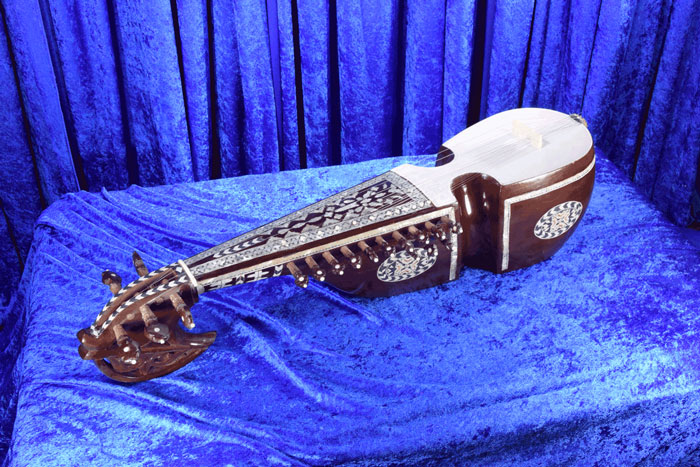
Rabab is a very ancient instrument found primarily in Afghanistan but in India is common in Kashmir. It is a hollowed-out body of wood with a membrane stretched over the opening. Combinations of gut (or nylon) and metal strings pass over a bridge which rests on a taught membrane. The rabab is mentioned quite frequently in old texts. However, this is usually the seni rabab which is different from what we think of today. It is common to refer to the modern rabab as the kabuli rabab to distinguish it from the seni rabab.
Although the kabuli rabab is the style that is normally thought of today, over the centuries the term has been applied to a variety of instruments. Therefore as a generic term it has been applied to a variety of instruments that even impinge upon the sarod and the sarangi.
There is evidence that this instrument may be the progenitor of a number of Indian instruments. The saringda, sarod, and the sarangi are the ones most commonly attributed to this instrument. At first it may seem hard to make the connection between a plucked instrument and a bowed instrument, however notice the “waist” in the middle of the rabab. This is an indication that the instrument at some time was played with a bow. All bowed instruments must be narrow at the place where the bow must pass.
| Are you interested in a secular approach to teaching Indian music. |
|---|
Indian music is traditional taught in a fashion that is linked to Hindu world views. But there are situations, often in schools, where this approach may not be the best. In such situations The Music of South Asia may be the best resource for you.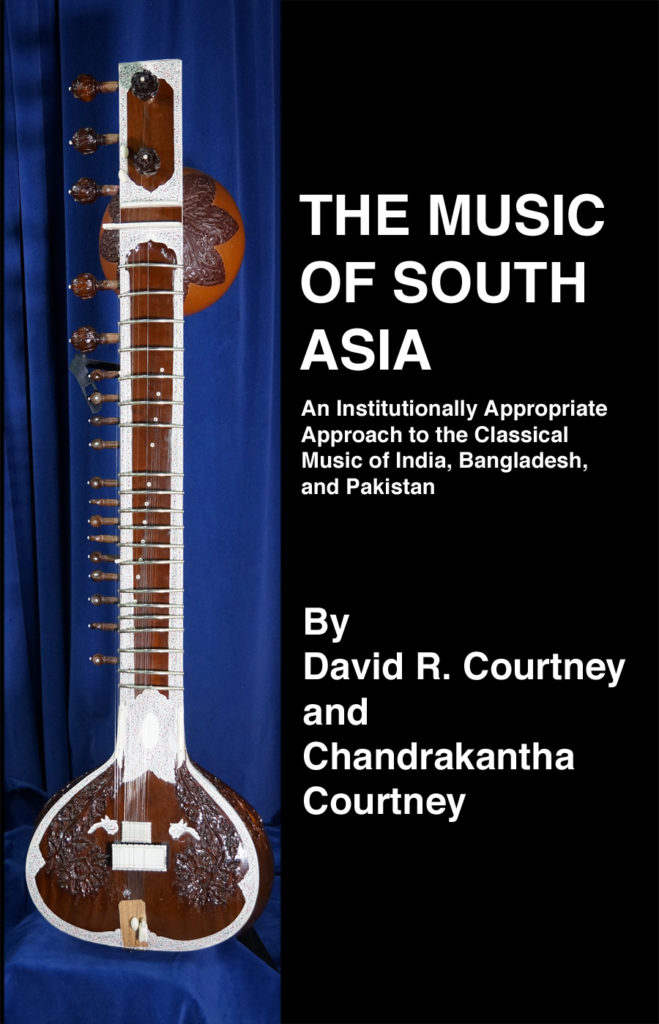 |
Photo Gallery
Click on image
Rabab (top)
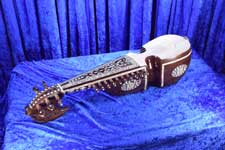
Fingerboard
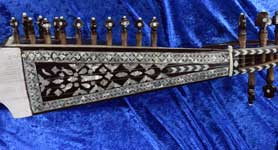
Rabab (bottom)
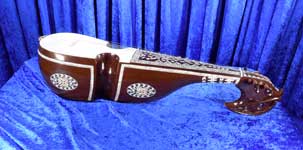
Pegbox
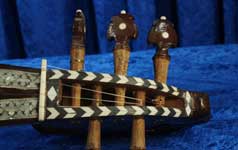
Decoration
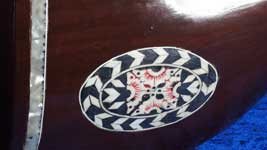
Tuning pegs

Long view

Decorative head
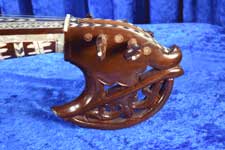
Nut
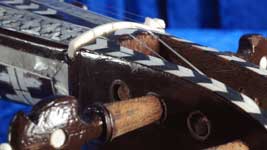
Tail piece

Rabab Restoration
Picture of Christopher Davey’s Rabab Restoration